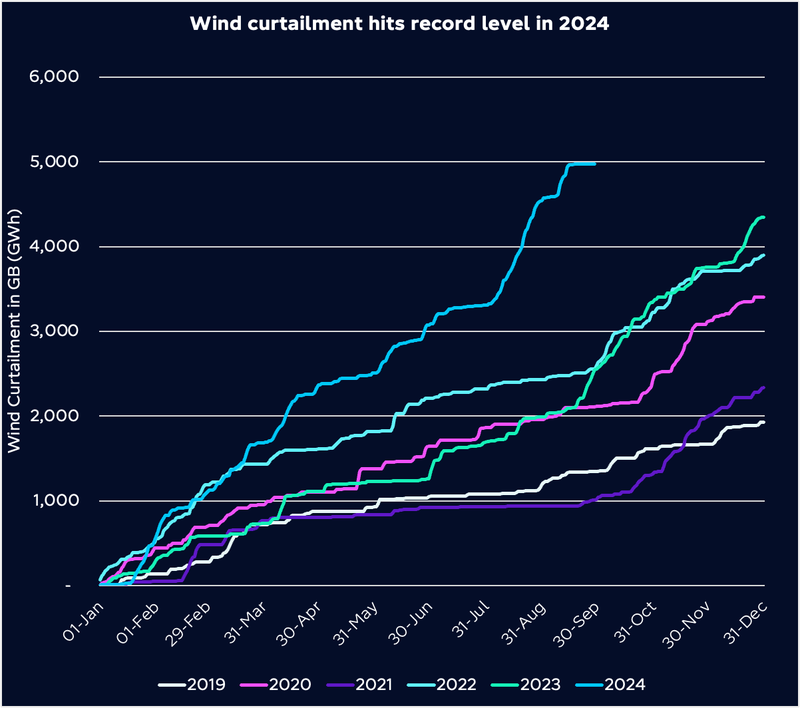It has emerged that the UK is paying wind farms to switch off their wind turbines as they can’t do anything with the oversupply of energy being produced in high wind conditions.
Reportedly, UK bill payers have been burdened with a “curtailment” bill of £1 Billion since January of this year. “Curtailment” is the practice of compensating wind turbine generators for their losses when they switch off the turbines when they are supplying more energy than the grid can handle.
The Telegraph reported that curtailment had nearly doubled in the past year and that it had cost the grid’s operator, the ESO, an “absurd” £1Bn for the 11 months of this year up to December. They add: “The amount of wind power “curtailed” in the first 11 months of 2024 stood at about 6.6 gigawatt hours (GWh), according to official figures, up from 3.8 GWh in the whole of last year.”
The problem is caused by a mismatch in where the electricity is generated, to where it is used. Wind energy in low populated Scotland cannot be transported to the south where there is a population and industry demand for it. The high voltage transmission lines which would be necessary to bring the electricity to where the demand is, are not built. This bottleneck in transmission adds waste to the power system which this report by Greeneconomy says could add £150 to every household bill annually by 2026.
As this Graph by smart energy provider Octopus Energy shows, wind curtailment has steadily grown over the past 4 years.

image_8_9wtyfUf.width-800.png (800×708)
Clem Cowton, the director of external affairs from Octopus Energy said: “It’s absurd that Britain pays Scottish wind farms to turn off when it’s windy, while simultaneously paying gas-power stations in the South to turn on.”
The intermittency of wind energy brings inherent problems to energy supply and grid management which have knock on effects on consumer energy prices. These embedded costs come in the form of infrastructure costs such as high power transmission grids which have to be built to transmit renewable energy from low population areas where they are generated, to the high density industrial areas where the demand is.
We have reported previously that and that Germany failure’s to build a transmission grid, as part of their energiewende (green enegy) plan, has led to rapidly raising electricity prices and has contributed to its deindustrialization.
Other embedded costs arising from renewables intermittency are policy related, in the form of financial incentives given to renewable suppliers. Curtailment payments are one form, as are fixed tariffs which are paid out to renewable generators in Ireland and Germany.
In this instance, the regulator pays a guaranteed tariff to solar and wind generators no matter what the price of electricity on the market that day is. Market spot prices for electricity fluctuate daily based on supply and demand. Electricty prices on the market can even be negative when there is an overabundance. So in some circumstances fixed tariffs mean taxpayers could be buying the electricity of the wind farms while simultaneously paying someone else to take it off of us.
Who eats the losses is the household customer, either in their bill or in government-paid subsidies.